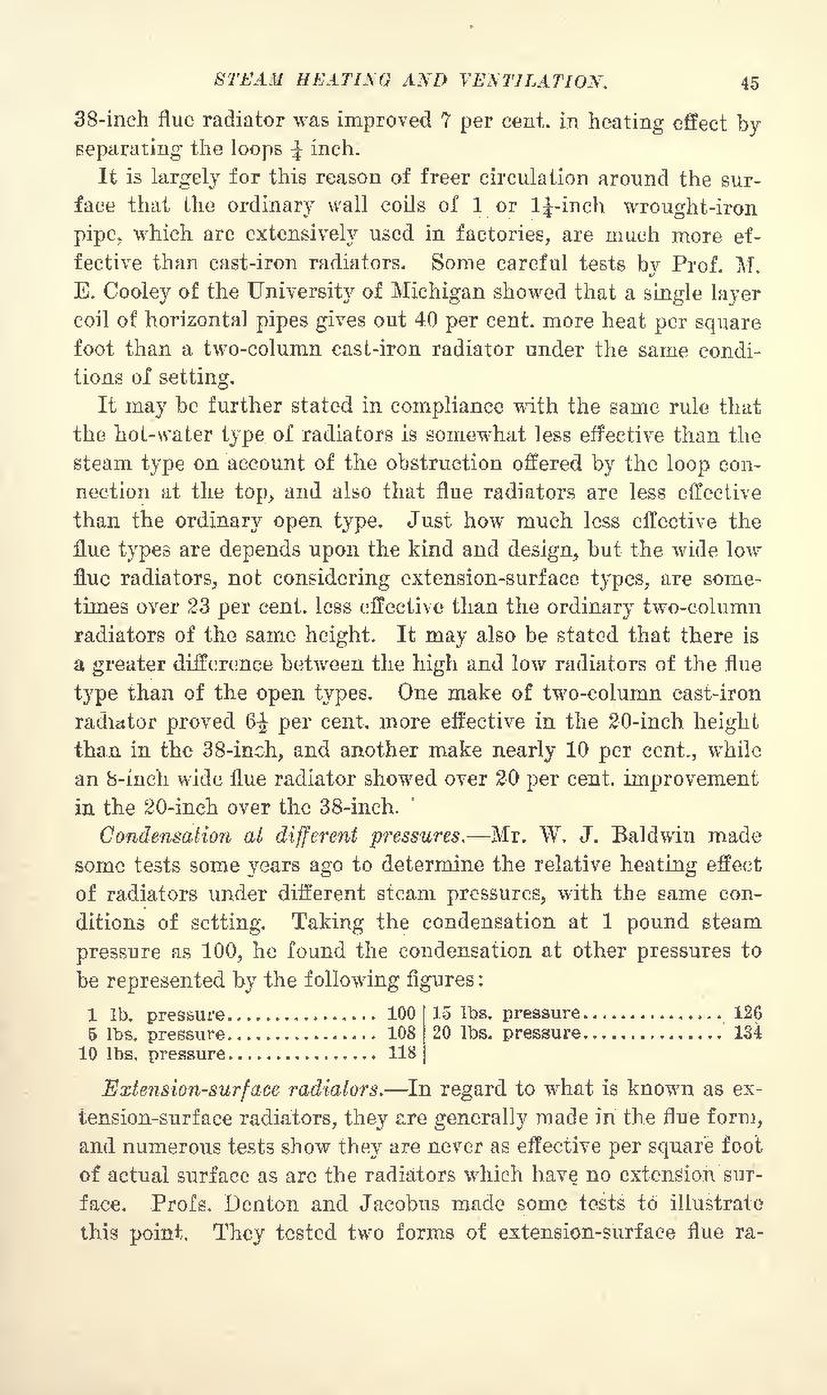38-inch flue radiator was improved 7 per cent. in heating effect by separating the loops ¼ inch.
It is largely for this reason of freer circulation around the surface that the ordinary wall coils of 1 or l¼-inch wrought-iron pipe, which are extensively used in factories, are much more effective than cast-iron radiators. Some careful tests by Prof. M. E. Cooley of the University of Michigan showed that a single layer coil of horizontal pipes gives out 40 per cent. more heat per square foot than a two-column cast-iron radiator under the same conditions of setting.
It may be further stated in compliance with the same rule that the hot-water type of radiators is somewhat less effective than the steam type on account of the obstruction offered by the loop connection at the top, and also that flue radiators are less effective than the ordinary open type. Just how much less effective the flue types are depends upon the kind and design, but the wide low flue radiators, not considering extension-surface types, are sometimes over 23 per cent. less effective than the ordinary two-column radiators of the same height. It may also be stated that there is a greater difference between the high and low radiators of the flue type than of the open types. One make of two-column cast-iron radiator proved 6½ per cent. more effective in the 20-inch height than in the 38-inch, and another make nearly 10 per cent., while an 8-inch wide flue radiator showed over 20 per cent. improvement in the 20-inch over the 38-inch.
Condensation at different pressures.—Mr. W. J. Baldwin made some tests some years ago to determine the relative heating effect of radiators under different steam pressures, with the same conditions of setting. Taking the condensation at 1 pound steam pressure as 100, he found the condensation at other pressures to be represented by the following figures:
| 1 | lb. pressure | ... | 100 |
| 5 | lbs. pressure | ... | 108 |
| 10 | lbs. pressure | ... | 118 |
| 15 | lbs. pressure | ... | 126 |
| 20 | lbs. pressure | ... | 134 |
Extension-surface radiators.—In regard to what is known as extension-surface radiators, they are generally made in the flue form, and numerous tests show they are never as effective per square foot of actual surface as are the radiators which have no extension surface. Profs. Denton and Jacobus made some tests to illustrate this point. They tested two forms of extension-surface flue ra-
